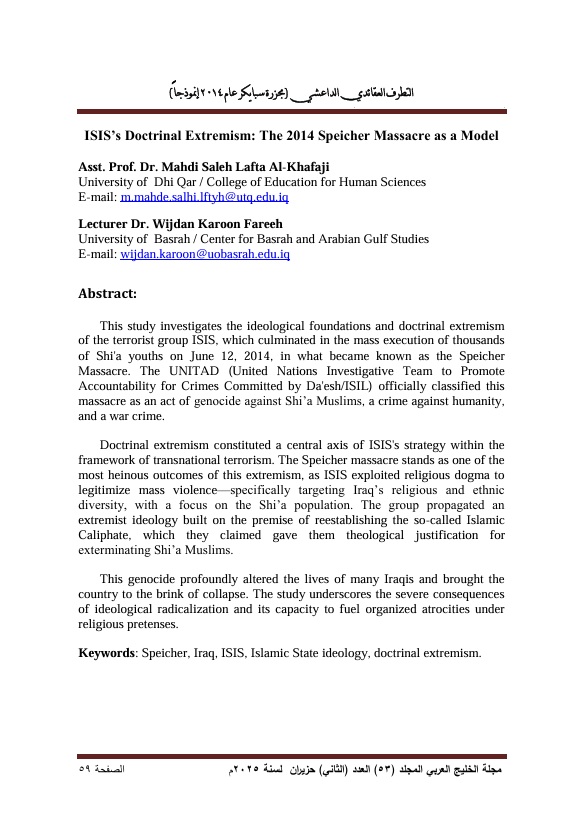ISIS’s Doctrinal Extremism: The 2014 Speicher Massacre as a Model
Keywords:
Speicher, Iraq, ISIS, Islamic State ideology, doctrinal extremismAbstract
This study investigates the ideological foundations and doctrinal extremism of the terrorist group ISIS, which culminated in the mass execution of thousands of Shi'a youths on June 12, 2014, in what became known as the Speicher Massacre. The UNITAD (United Nations Investigative Team to Promote Accountability for Crimes Committed by Da'esh/ISIL) officially classified this massacre as an act of genocide against Shi’a Muslims, a crime against humanity, and a war crime.
Doctrinal extremism constituted a central axis of ISIS's strategy within the framework of transnational terrorism. The Speicher massacre stands as one of the most heinous outcomes of this extremism, as ISIS exploited religious dogma to legitimize mass violence—specifically targeting Iraq’s religious and ethnic diversity, with a focus on the Shi’a population. The group propagated an extremist ideology built on the premise of reestablishing the so-called Islamic Caliphate, which they claimed gave them theological justification for exterminating Shi’a Muslims.
This genocide profoundly altered the lives of many Iraqis and brought the country to the brink of collapse. The study underscores the severe consequences of ideological radicalization and its capacity to fuel organized atrocities under religious pretenses.




